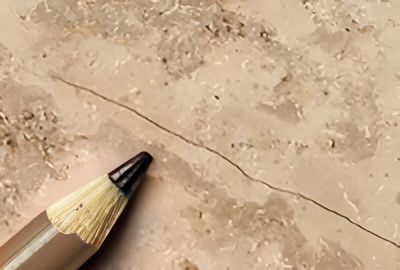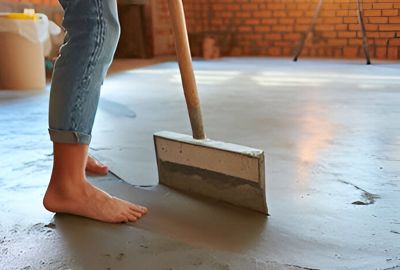Whether you’re looking to set down a classic set of natural stone tiles across your floor, or you favour a more contemporary porcelain tile look, there are few things more frustrating than finishing your project, only to find out that your new tiles are cracked not long after.
There are a few reasons why this might occur, the most common of which could be if your floors are experiencing too much bounce or excessive movement due to temperature changes. Fortunately, the good news is that this can be prevented with the right preparation – such as by installing Ditra matting beneath your tiles.
So, if you want to learn how to lay Ditra matting in your next tiling DIY project, and how it could prevent your new tiles from cracking in the future, read our guide on this product below.
What is anti-crack matting?
Ditra matting, also known as anti-fracture or anti-crack matting, is a type of material known as a decoupling membrane. It’s designed to form a barrier between your tiles and your floor, allowing the subfloor to expand and contract without affecting your tile’s positions, thus minimising the risk of your tiles cracking due to micro-movements.
Why use anti-crack matting when laying flooring?
While the idea of placing a thin matting between your tiles and their subfloor might seem strange, especially if you’re after a strong bond, using anti-fracture matting will in no way hinder the structural integrity of your new tiles. If anything, it will improve it by ensuring your tiles aren’t placed under excessive pressure through natural warping.
However, it’s not necessary for all tiling projects, just those that are being done in rooms exposed to specific factors. For example, anti-crack matting is ideal for use when tiling over wooden floors to eliminate the effects of bounce, as well as being used in tandem with tiles laid on top of underfloor heating.
By providing a shield between the subfloors and your tiles, it provides room for your subfloor to breathe, expanding and contracting at its own rate without tugging directly on the tiles adhered on top of it. In other words, using anti-fracture matting helps to future-proof your tiles against hairline cracks.
Of course, if you do experience damage to your flooring, we may be able to offer some assistance with our guide to the DIY repairs you can make to stone tiles.
Is Ditra matting necessary for all tiles?
As mentioned, it’s not always necessary for you to use anti-crack matting in all your tiled rooms. However, we strongly recommend its installation in rooms where your tiles will be exposed to regular and sudden shifts in temperature, such as bathrooms, or if they are laid atop noticeably bouncy wooden floors, to mitigate the problems that come with these subfloor issues.
How to lay anti-crack matting
Thinking of using anti-crack matting in your next tiling project? Follow our key steps below to learn how to lay anti-crack matting properly:
1. Clean your subfloor – a clean subfloor is essential if you want your matting to stick properly to its adhesive. Failing to clean your subfloor means that dirt and blemishes can interfere with your adhesive’s strength, potentially leading to your matting peeling up at a later date.
2. Level your subfloor – though not always required, if your subfloor is uneven or wooden, you’ll need to apply a levelling screen or plyboard sheet to create a level finish. You can read more about how to do this in our blogs on installing tiles on concrete and installing tiles on wooden floors.
3. Prime your substrate – with your subfloor level, your next step is to apply a primer to enhance the effectiveness of your adhesive. Once this is done, you can then apply your matting’s adhesive to your subfloor.
4. Lay your matting – once your adhesive has been spread out, you can start laying down the matting. Take your time and don’t rush the process, being careful to cut your matting when necessary to fit the edges of your room or around obstacles. After your matting is fully down, compress it flat to eliminate any air bubbles and then wipe away any excess adhesive that squeezes out the edges.
5. Lay your tiles – finally, with the matting down, you can begin laying your tiles as you would normally. This can be done immediately after laying your matting as there is no need to wait for its adhesive to dry, meaning you can have both it and your tiles laid on the same day. Again, you can find out more about how to tile your floors properly by reading our related guides.
You should now know everything you need about laying anti-fracture matting in your home. Of course, there’s no guarantee that it will prevent your tiles from cracking entirely, but it will help reduce the risk.
Naturally, if you want more information on this topic, and further tiling advice straight from the source, then you can get in touch with our team of experts today. Don’t forget to check out the rest of our tile installation advice guides for more handy information like this one.



